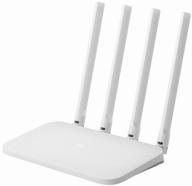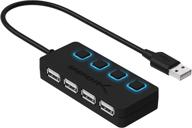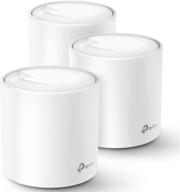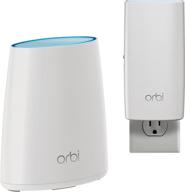Common Issues With Wi-Fi Coverage
In today's connected world, having reliable Wi-Fi coverage throughout your home is extremely important. However, many homeowners struggle with problems like dead zones, slow speeds, and constant dropping of connections. Here are some of the most common Wi-Fi coverage issues and their likely causes.
Dead Zones
Dead zones are areas in your home that receive little to no Wi-Fi signal. They occur because the Wi-Fi router's signals cannot penetrate thick walls or multiple floors. Dead zones usually happen in:
- Basements
- Far corners of the house
- Rooms separated by many walls from the router
Having dead zones means you'll lose your connection and suffer constant interruption as you move through the house. It affects activities like video calling, streaming media, and web browsing.
Slow Speeds
Even if you have decent coverage, you may still experience painfully slow connection speeds. Some common reasons for reduced speeds include:
- Outdated router hardware
- Too many connected devices
- Interference from neighboring Wi-Fi networks
- Obstructions between your device and the router
- Exceeding your internet plan's bandwidth
Slow Wi-Fi essentially renders your wireless network unusable for bandwidth-intensive tasks like 4K video streaming or video calls. It will feel like you're constantly waiting for pages to load or for files to buffer.
Frequent Disconnections
Having your Wi-Fi connection drop randomly can be incredibly disruptive. Some causes of frequent disconnections include:
- Being too far from the router
- Interference from Bluetooth, cordless phones, microwaves, etc.
- Faulty router firmware
- Overloaded channels from neighborhood Wi-Fi congestion
Frequent disconnects make it impossible to stay connected long enough to do anything meaningful online. You might even drain your cellular data plan quickly as your mobile devices switch over to mobile data whenever the Wi-Fi drops.
How to Fix Wi-Fi Coverage Issues
Here are some tips to improve your home's Wi-Fi coverage:
- Get a newer, faster router with stronger antennas
- Position the router centrally in your home, away from obstructions
- Upgrade to a mesh Wi-Fi system to blanket your whole home
- Use Ethernet backhaul for mesh nodes whenever possible
- Reduce interference by changing Wi-Fi channels
By understanding the most common Wi-Fi coverage issues and solutions, you can troubleshoot problems and enjoy seamless connectivity throughout your home.
Benefits of Mesh Networks
Mesh Wi-Fi systems have become increasingly popular in recent years due to their ability to provide complete and reliable wireless coverage across large spaces. Here are some of the key benefits mesh networks offer over traditional routers.
Whole Home Coverage
A mesh system includes multiple access points, or nodes, that work together to form one unified network. This allows you to eliminate dead zones and get strong Wi-Fi signals in every corner of your home, even over multiple floors and rooms. For example, a 3-node Orbi WiFi 6 mesh system can cover up to 7,500 square feet with fast speeds.
Easy Setup
Setting up a mesh system is very straightforward compared to traditional routers. Mesh kits come preconfigured - you just need to plug them in and download the app to get online within minutes. For instance, Google WiFi lets you set up the entire mesh network through a simple, intuitive mobile app.
Similar products
Seamless Roaming
As you move through your house with a mobile device, mesh systems provide seamless connectivity by automatically switching connections between access points. This means you can walk from the living room to the garage without losing your video call or music streaming session.
Another interesting products
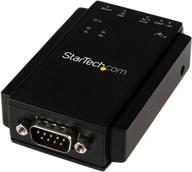

4 Review

Eliminates Blackspots
Mesh kits include dedicated backhaul channels that allow nodes to communicate with each other and bypass any obstructions. This prevents blackspots in tricky areas like behind appliances or thick walls where single routers struggle. Eero's TrueMesh technology offers excellent backhaul optimization.
Adds Capacity
With each additional satellite node, the overall Wi-Fi capacity of your network also increases. More nodes means more available channels, less congestion, and faster speeds even with many devices connected. AmpliFi HD delivers massive capacity gains by adding mesh points.
Flexibility
Mesh systems are modular, allowing you to expand coverage anytime by adding extra nodes. Start with a 2-node setup and add satellites later for bedrooms or backyard coverage. Linksys Velop lets you build a customized system to fit your changing needs.
Advanced Features
Leading mesh systems come loaded with smart software features like automatic updates, robust parental controls, enhanced security protocols, and built-in antivirus. For example, Netgear Orbi has a constantly evolving firmware with new features and performance improvements.
With whole home wireless coverage, easy setup, seamless roaming, and flexibility for growth - mesh networks provide significant advantages over traditional Wi-Fi routers. Eliminate frustration from dead zones and slow speeds by investing in a reliable mesh system.
Choosing the Right Mesh System
With more mesh Wi-Fi systems available than ever, picking the right one for your home can be challenging. Here are some key factors to consider when shopping for a mesh network.
Coverage Area
Consider the total square footage and layout of your living space. How many floors need coverage? Are there any outdoor areas you want to reach? Mesh kits come in different configurations (2-pack, 3-pack etc.) to handle small apartments up to large houses.
- Eero 6 covers up to 5,000 sq. ft. with 3 nodes
- Netgear Orbi covers up to 7,500 sq. ft. with 3 nodes
- Linksys Velop covers up to 6,000 sq. ft. with 3 nodes
Wi-Fi Generation
Newer Wi-Fi 6 (802.11ax) mesh systems deliver faster maximum speeds, increased capacity, and better efficiency than Wi-Fi 5 (802.11ac). But Wi-Fi 5 options tend to be more affordable. Consider how many devices you need to support when choosing between generations.
- Wi-Fi 6: Netgear Orbi WiFi 6, Linksys Atlas 6, Asus ZenWiFi AX
- Wi-Fi 5: Google Nest, Netgear Orbi, Linksys Velop
Speed Rating
Mesh systems are typically dual or even tri-band, using one band for communication between nodes and the others to connect devices. Higher bandwidth supports faster throughput speeds. Look for speed ratings of at least AC1200 or AX1800 for good performance.
- Eero 6 offers speeds up to AX1800
- Linksys Velop offers speeds up to AC2200
Number of Nodes
Mesh starter kits begin with 2 or 3 nodes, which can be expanded separately later. More nodes increase your coverage and bandwidth capacity. But start with only what you need immediately to save cost.
- Netgear Orbi has 2 and 3-pack options
- Linksys Velop has 1, 2 and 3-pack kits
Ease of Setup
Look for a mesh system with a user-friendly app that walks you through installation. Systems like eero, Orbi, and Google WiFi allow quick and easy setup right from a smartphone.
Smart Features
Consider extra features like built-in platform support for IoT devices, robust parental controls, antivirus protection, QoS for bandwidth prioritization, and automatic updates. Advanced options really elevate the functionality of mesh networks.
Choosing the right mesh system is about balancing the coverage, capacity, speed, and features you need for your home's demands and budget. Analyze your environment carefully and read professional reviews to make the best decision.
Key Features to Look For in a Mesh Wi-Fi System
Mesh Wi-Fi systems have many benefits over traditional routers, but not all mesh kits are created equal. Here are some of the top features to look for when shopping for a mesh network.
Seamless Roaming
A good mesh system uses intelligent software to provide smooth, uninterrupted connections as you move through your home. For example, Google WiFi aims to deliver a cellular-like roaming experience between access points.
Tri-band Radios
Mesh nodes with three internal radios or bands allow for dedicated backhaul communication between nodes on one band, while the other two connect devices without congestion. Eero Pro uses tri-band radios to maximize speeds.
Wi-Fi 6 Support
The latest Wi-Fi 6 standard brings faster top speeds, increased network capacity, and better efficiency. A Wi-Fi 6 mesh system like Linksys Atlas 6 future-proofs your network for the newest devices.
OFDMA
OFDMA allows simultaneous transmissions to multiple devices at once, reducing latency. Mesh systems like Asus ZenWiFi AX make use of OFDMA for faster, more responsive Wi-Fi.
MU-MIMO
MU-MIMO lets a router or node communicate with multiple clients at the same time. Netgear Orbi supports MU-MIMO for more simultaneous connections and speed.
Beamforming
Beamforming focuses wireless signals directly to client devices instead of broadcasting in all directions. This extends range and improves speeds. Linksys Velop's beamforming isolates signals for better coverage.
Modular Design
Mesh nodes designed as discrete modules let you expand coverage anytime. Start with a 2-pack and add extras later for a customized setup. Netgear Orbi has many affordable add-on satellite options.
Ethernet Backhaul
Wired Ethernet backhaul between nodes reduces reliance on wireless uplinks for faster and more stable performance. Meshforce whole home kits use Ethernet backhaul for maximum throughput.
App Management
An intuitive companion app makes monitoring and managing your network easy. See connected devices, run speed tests, adjust settings, and more from your phone. TP-Link Deco includes full-featured app control.
Advanced Security
Leading mesh systems integrate advanced security like antivirus, intrusion prevention, encryption, and more. Eero Secure adds enterprise-grade protection against malware and phishing attacks.
Prioritize the features that matter most for your environment when choosing a mesh system. The right combination of cutting-edge Wi-Fi technology will take your home network to the next level.
Get Seamless Wi-Fi Coverage For Your Entire Home With Whole Home & Mesh Wi-Fi Systems
Whole Home & Mesh Wi-Fi Systems provide seamless Wi-Fi coverage for your entire home. These systems consist of a main router that connects directly to your modem and a series of satellite modules or nodes placed around your house for full Wi-Fi coverage. The modular mesh whole home Wi-Fi system is flexible and scalable, giving you a customizable method of expanding your Wi-Fi without the need to add range extenders. Whole Home & Mesh Wi-Fi Systems cover every inch of your home so you can forget about dead zones and weak signals. These systems provide wider coverage of up to 6000 sq. ft. and work seamlessly to create a mesh network that can cover up to 5,500 square feet of three-dimensional space. Whole Home & Mesh Wi-Fi Systems offer uninterrupted streaming, gaming, and browsing with gigabit speed.
What Are The Benefits Of Using A Mesh Wi-Fi System?
Mesh Wi-Fi systems offer several benefits over traditional Wi-Fi networks. Here are some of the benefits of using a mesh Wi-Fi system:
Top products in 🏠 Whole Home & Mesh Wi-Fi Systems
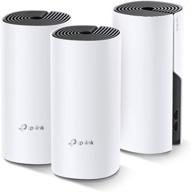

24 Review









